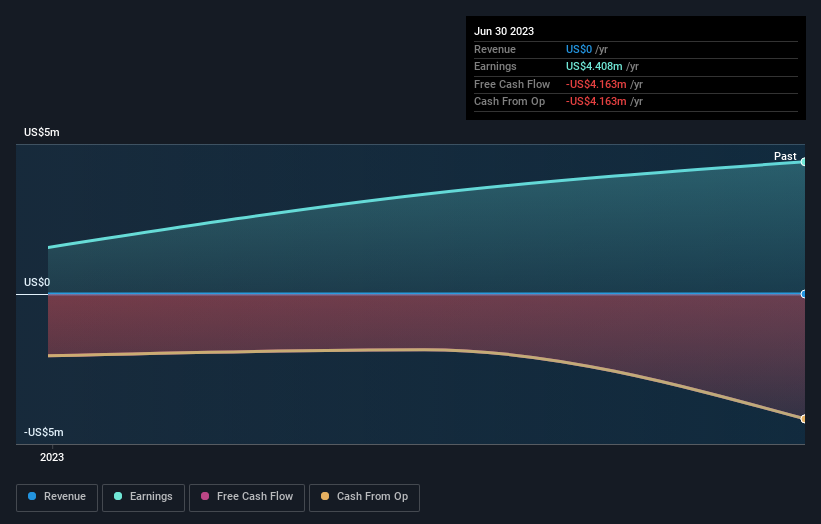Private companies account for 46% of Papaya Growth Opportunity Corp. I's (NASDAQ:PPYA) ownership, while institutions account for 40%
Key Insights
The considerable ownership by private companies in Papaya Growth Opportunity I indicates that they collectively have a greater say in management and business strategy
The top 2 shareholders own 50% of the company
Institutional ownership in Papaya Growth Opportunity I is 40%
If you want to know who really controls Papaya Growth Opportunity Corp. I (NASDAQ:PPYA), then you'll have to look at the makeup of its share registry. With 46% stake, private companies possess the maximum shares in the company. In other words, the group stands to gain the most (or lose the most) from their investment into the company.
Institutions, on the other hand, account for 40% of the company's stockholders. Generally speaking, as a company grows, institutions will increase their ownership. Conversely, insiders often decrease their ownership over time.
In the chart below, we zoom in on the different ownership groups of Papaya Growth Opportunity I.
See our latest analysis for Papaya Growth Opportunity I
What Does The Institutional Ownership Tell Us About Papaya Growth Opportunity I?
Many institutions measure their performance against an index that approximates the local market. So they usually pay more attention to companies that are included in major indices.
We can see that Papaya Growth Opportunity I does have institutional investors; and they hold a good portion of the company's stock. This implies the analysts working for those institutions have looked at the stock and they like it. But just like anyone else, they could be wrong. If multiple institutions change their view on a stock at the same time, you could see the share price drop fast. It's therefore worth looking at Papaya Growth Opportunity I's earnings history below. Of course, the future is what really matters.
We note that hedge funds don't have a meaningful investment in Papaya Growth Opportunity I. Papaya Growth Opportunity I Sponsor LLC is currently the company's largest shareholder with 46% of shares outstanding. Meanwhile, the second and third largest shareholders, hold 4.3% and 3.7%, of the shares outstanding, respectively.
After doing some more digging, we found that the top 2 shareholders collectively control more than half of the company's shares, implying that they have considerable power to influence the company's decisions.
Researching institutional ownership is a good way to gauge and filter a stock's expected performance. The same can be achieved by studying analyst sentiments. Our information suggests that there isn't any analyst coverage of the stock, so it is probably little known.
Insider Ownership Of Papaya Growth Opportunity I
While the precise definition of an insider can be subjective, almost everyone considers board members to be insiders. The company management answer to the board and the latter should represent the interests of shareholders. Notably, sometimes top-level managers are on the board themselves.
Insider ownership is positive when it signals leadership are thinking like the true owners of the company. However, high insider ownership can also give immense power to a small group within the company. This can be negative in some circumstances.
We note our data does not show any board members holding shares, personally. Not all jurisdictions have the same rules around disclosing insider ownership, and it is possible we have missed something, here. So you can click here learn more about the CEO.
General Public Ownership
The general public, who are usually individual investors, hold a 14% stake in Papaya Growth Opportunity I. While this size of ownership may not be enough to sway a policy decision in their favour, they can still make a collective impact on company policies.
Private Company Ownership
Our data indicates that Private Companies hold 46%, of the company's shares. It's hard to draw any conclusions from this fact alone, so its worth looking into who owns those private companies. Sometimes insiders or other related parties have an interest in shares in a public company through a separate private company.
Next Steps:
It's always worth thinking about the different groups who own shares in a company. But to understand Papaya Growth Opportunity I better, we need to consider many other factors. Case in point: We've spotted 5 warning signs for Papaya Growth Opportunity I you should be aware of, and 3 of them shouldn't be ignored.
If you would prefer check out another company -- one with potentially superior financials -- then do not miss this free list of interesting companies, backed by strong financial data.
NB: Figures in this article are calculated using data from the last twelve months, which refer to the 12-month period ending on the last date of the month the financial statement is dated. This may not be consistent with full year annual report figures.
Have feedback on this article? Concerned about the content? Get in touch with us directly. Alternatively, email editorial-team (at) simplywallst.com.
This article by Simply Wall St is general in nature. We provide commentary based on historical data and analyst forecasts only using an unbiased methodology and our articles are not intended to be financial advice. It does not constitute a recommendation to buy or sell any stock, and does not take account of your objectives, or your financial situation. We aim to bring you long-term focused analysis driven by fundamental data. Note that our analysis may not factor in the latest price-sensitive company announcements or qualitative material. Simply Wall St has no position in any stocks mentioned.

 Yahoo Finance
Yahoo Finance 

